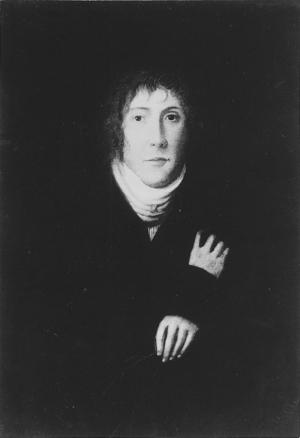
Friedrich Wilhelm Bessel was a German astronomer, mathematician, physicist, and geodesist. He was the first astronomer who determined reliable values for the distance from the sun to another star by the method of parallax. Certain important mathematical functions were named Bessel functions after Bessel's death, though they had originally been discovered by Daniel Bernoulli before being generalised by Bessel.
Dark wave is a music genre that emerged from the new wave and post-punk movement of the late 1970s. Dark wave compositions are largely based on minor key tonality and introspective lyrics and have been perceived as being dark, romantic and bleak, with an undertone of sorrow. The genre embraces a range of styles including cold wave, ethereal wave, gothic rock, neoclassical dark wave and neofolk.
Frequent urination, or urinary frequency, is the need to urinate more often than usual. Diuretics are medications that increase urinary frequency. Nocturia is the need of frequent urination at night. The most common cause of this condition for women and children is a urinary tract infection. The most common cause of urinary frequency in older men is an enlarged prostate.
Nephropexy is the surgical fixation of a floating or mobile kidney (nephroptosis).

Georg Karl Frederick was a duke of Saxe-Altenburg.
"The Centipede's Dilemma" is a short poem that has lent its name to a psychological effect called the centipede effect or centipede syndrome. The centipede effect occurs when a normally automatic or unconscious activity is disrupted by consciousness of it or reflection on it. For example, a golfer thinking too closely about their swing or someone thinking too much about how they knot their tie may find their performance of the task impaired. The effect is also known as hyperreflection or Humphrey's law after English psychologist George Humphrey (1889–1966), who propounded it in 1923. As he wrote of the poem, "This is a most psychological rhyme. It contains a profound truth which is illustrated daily in the lives of all of us". The effect is the reverse of a solvitur ambulando.

Rudolf John Gorsleben was a German Ariosophist, Armanist, journal editor and playwright.

Karl Friedrich Burdach was a German physiologist. He was born in Leipzig and died in Königsberg. He was the first to use the word "biology" and was a pioneer of neuroanatomy.

Acecarbromal (INN), also known as acetylcarbromal and acetyladalin, is a hypnotic and sedative drug of the ureide (acylurea) group discovered by Bayer in 1917 that was formerly marketed in the United States and Europe. It is also used in combination with extract of quebracho and vitamin E as a treatment for erectile dysfunction under the brand name Afrodor in Europe. Acecarbromal is structurally related to the barbiturates, which are basically cyclized ureas. Prolonged use is not recommended as it can cause bromine poisoning.

Elisabeth Friederike Rotten was a Quaker peace activist and educational progressive.

Mecillinam (INN) or amdinocillin (USAN) is an extended-spectrum penicillin antibiotic of the amidinopenicillin class that binds specifically to penicillin binding protein 2 (PBP2), and is only considered to be active against Gram-negative bacteria. It is used primarily in the treatment of urinary tract infections, and has also been used to treat typhoid and paratyphoid fever. Because mecillinam has very low oral bioavailability, an orally active prodrug was developed: pivmecillinam.

Leopold Casper was a German physician and urologist born in Berlin.

Philipp Bozzini was born in Mainz, Germany. On June 12, 1797 he was awarded the degree of doctor of medicine. From 1804 onwards, Bozzini devoted himself virtually completely to develop his instrument, Lichtleiter or "Light Conductor", a primitive endoscope to allow for inspecting the ear, urethra, rectum, female bladder, cervix, mouth, nasal cavity, or wounds. Philipp Bozzini, using the modest means available at the beginning of the 19th century, was able to show to the medical profession the way to endoscopy. With his instrument and ideas, he was three quarters of a century ahead of the technical and scientific possibilities of his time. Historians agree that this instrument using artificial light and various mirrors and specula was the beginning of a large family of endoscopes.

Johann Bartholomew (Bartholomäus) Trommsdorff, was a German chemist and pharmacist noted for his 1805 Systematisches Handbuch der Gesammten Chemie ; a work that was published in eight volumes.
Otto Bähr was a German legal scholar and liberal parliamentarian.

Ethinylestradiol sulfonate (EES), sold under the brand names Deposiston and Turisteron among others, is an estrogen medication which has been used in birth control pills for women and in the treatment of prostate cancer in men. It has also been investigated in the treatment of breast cancer in women. The medication was combined with norethisterone acetate in birth control pills. EES is taken by mouth once per week.

Sophus Ruge was a German geographer and historian, he studied about European discoveries and written works about Portuguese discoveries. His studies was a different vision on one traditionally followed in Portugal, he had translated a large part from Portuguese and had been influential in the development of Portuguese historiography.
Adelheild Gnaiger (1916–1991) was an Austrian architect. She studied at the Vienna Institute of Technology, now TU Wien, graduating in 1937. After working in an office in Zurich, she took her licensing exams in 1950 to found her own office. She was the first woman to head her own architectural practice in Vorarlberg. Her office worked on civic and private commissions, including banks, schools and public buildings. She was the architect of the ... and also designed of a number of private residences. Her architecture, defined by a style that negotiated between modern architecture and tradition, influenced the architecture of Vorarlberg in the post-war period. Her life and work was the subject of Ingrid Holzschuh's book Adelheid Gnaiger. Die erste Architektin Vorarlbergs with contributions by a number of notable Austrian art historians. The book was published in collaboration with the vorarlberg museum.

Licco Amar was a Hungarian violinist.
Hermann Mendel was a German musicologist.












